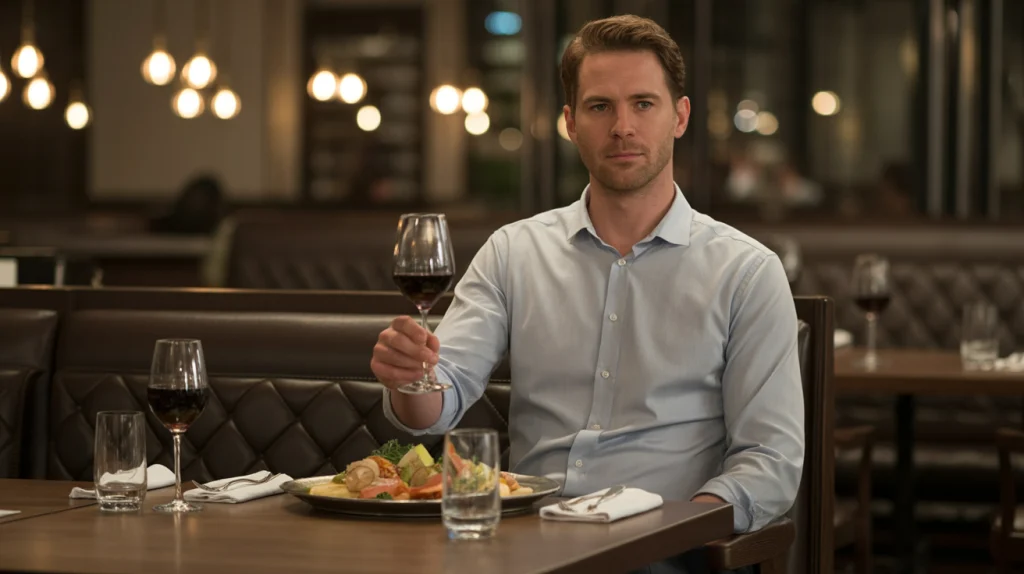By Futurist Thomas Frey
In 2025, the first hints of a culinary revolution appeared in a few elite dining rooms in New York and Tokyo. About 1% of restaurants—mostly Michelin-starred or concept-driven establishments—quietly abandoned the centuries-old ritual of reservations. Instead, they embraced what became known as “dynamic dining.” Guests no longer booked tables weeks in advance or endured hold music to secure a spot. Instead, they arrived whenever they pleased, and AI systems handled the rest. Predictive algorithms assessed arrival patterns, optimized seating, and projected wait times to the exact minute. Diners could shop, stroll, or grab a cocktail nearby, receiving real-time updates as the system orchestrated the flow of guests like air traffic controllers manage incoming planes. When your table was ready, your phone buzzed. You walked in without friction. The results were staggering—no-shows dropped from 20% to less than 0.3%, table turnover jumped by 35%, and overall satisfaction reached record highs. The earliest adopters realized something profound: the reservation wasn’t a customer service—it was a bottleneck.
By 2040, that insight has rewritten global dining culture. The reservation system, once a symbol of order and prestige, is dead. “Continuous flow dining” is now standard across developed nations.
Restaurants no longer take bookings at fixed times—they orchestrate experiences in real time. When you decide to eat, you open your dining app and select a time window (“6–8 PM”) and a preference level (“flexible” or “15-minute max wait”). AI instantly maps the network of restaurants nearby, checking current table availability, kitchen throughput, and even traffic data. It then gives you a curated shortlist of options, optimizing for your tastes, schedule, and location. If your first choice becomes crowded, the system seamlessly reroutes you—suggesting alternatives with comparable cuisine and shorter waits. The entire dining ecosystem operates as one vast adaptive network, constantly learning from millions of data points.
For restaurants, this shift has been nothing short of revolutionary. Kitchens no longer suffer the boom-bust cycles of traditional service windows. Demand is distributed intelligently throughout the evening, reducing peak-hour chaos. Staff scheduling is algorithmically optimized—no more overstaffed Tuesdays or understaffed Saturdays. Energy and food waste plummet because AI systems forecast customer volume with 99% accuracy. Even spontaneous group dinners have become effortless: five friends decide to meet, input their preferences, and within seconds, the system finds the best table for all of them within walking distance—no phone calls required.
Culturally, dining itself has evolved. The prestige once associated with securing a coveted reservation has evaporated. “Fully booked until next month” is now a nostalgic relic of inefficiency. The new status symbol is spontaneity. Couples decide to eat at 7:13 PM, not because they planned it, but because the AI knows there’s a window opening at a Michelin-level fusion bar three blocks away. The idea of planning dinner weeks in advance feels as archaic as calling a travel agent to book a flight.
Economically, the impact has been profound. Restaurants that adopted continuous flow early saw profits rise 22–40% due to higher turnover and more consistent table utilization. Dining districts, once clogged with lines of waiting customers, now experience smooth pedestrian flow as guests are distributed intelligently across venues. Urban planners even use dining traffic data to improve transit routes and nightlife zoning. The entire hospitality industry has become a live, data-driven organism, adjusting itself in real time to the pulse of human behavior.
Of course, the transition wasn’t without resistance. Older diners complained about losing the security of knowing exactly when and where they’d eat. Some restaurateurs feared losing control of the “human touch.” A few luxury establishments held on to traditional reservations as a mark of exclusivity. But even those have been marginalized into niche markets, catering to patrons who still equate scarcity with sophistication. For everyone else, convenience and efficiency have won. Today, if a restaurant insists on reservations, it’s viewed as exclusionary—a relic of a bygone age.
In this world of continuous flow dining, food becomes more than nourishment—it becomes choreography. Behind the scenes, neural networks balance countless variables: walking speed, average meal duration, kitchen prep time, even regional events that might alter demand. AI doesn’t just predict; it orchestrates human movement at city scale. When you sit down to dinner, you’re participating in a global dance of logistics and leisure, unseen yet perfectly timed.

Final Thoughts
The death of the reservation is more than a restaurant story—it’s a story about how the world is learning to run without friction. Waiting, in all its forms, is becoming obsolete. We’re entering an era where cities, systems, and even our social calendars operate on real-time orchestration rather than rigid planning. The restaurants of 2040 don’t just serve food—they serve flow.
Related Reading:
- The Last Mile Problem Becomes the Last Minute Opportunity
- The Retail Resurrection: The Death of Warehouses Gave Birth to Experiential Commerce


